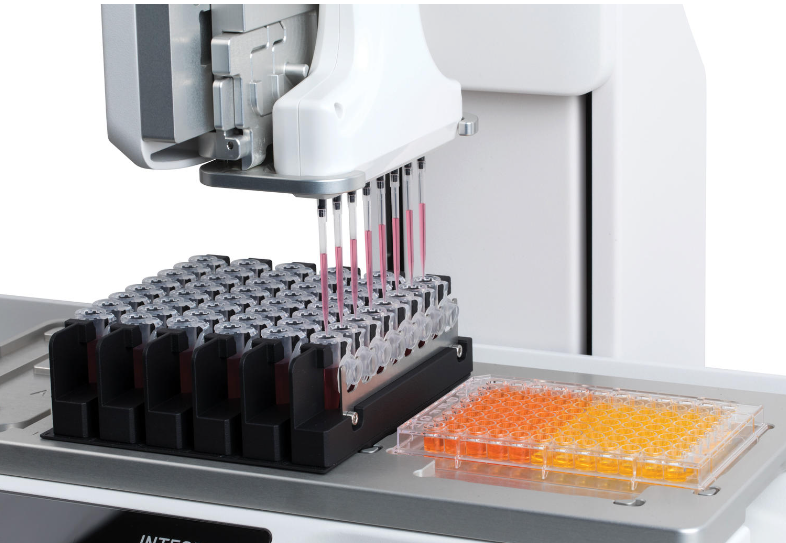Pipetting robots have revolutionized the way laboratory work is conducted in recent years. They have replaced manual pipetting, which was known to be time-consuming, error-prone and physically taxing on researchers. A pipetting robot, on the other hand, is easily programmed, delivers high throughput, and eliminates manual errors. Here are 10 reasons why choosing a pipetting robot for routine lab work is a smart choice.
Delegate your standard tasks
Most laboratory work requires extensive pipetting. While manual pipetting can be effective at small scales, it tends to be significantly time-consuming and can be particularly arduous when increasing the scale of experiments. Pipetting robots, on the other hand, offer a great advantage in this regard. Researchers can delegate routine tasks to the robot, allowing them to spend more time on more important work.
Higher throughput in less time
One of the main reasons for using a pipetting robot is throughput. Manual pipetting can be extremely slow and tedious, while a pipetting robot can increase throughput significantly. Robots can work much faster than humans, and can complete repetitive tasks with the same efficiency regardless of the time of day. This can save precious time and allow researchers to conduct more experiments in less time.
Error-free
Human error is one of the main reasons why lab work can fail, which can lead to wasted time and resources. A pipetting robot offers a significant advantage in this regard by reducing the risk of human error. Robots are programmed with precise calibration parameters and are designed to deliver consistent and accurate results every time.
Reproducibility & standardization
Another advantage of using a pipetting robot is reproducibility. By using a pipetting robot, researchers can ensure that all the samples are treated uniformly and accurately, resulting in more reliable and reproducible data. This feature is particularly important in situations where samples need to be treated uniformly and consistently to yield reliable results.
Automated documentation
Pipetting robots can create a digital record of each pipetting operation, which is a great asset when it comes to keeping track of results, samples, and procedures. The automated documentation feature can save researchers time and effort, allowing for easy retrieval of data collected during an experiment.
Increased productivity
Using a pipetting robot can help enhance laboratory productivity by freeing up researchers’ time to focus on other tasks. Pipetting robots can work around the clock, which means that a lab can function continuously without being restricted by a researcher’s schedule. Moreover, this can boost research output, allowing for more consistent and higher-quality results than manual pipetting.
Contamination prevention
Contamination can result in false outcomes, which can result in wasted time and resources. Pipetting with robots eliminates this risk of contamination because the robot’s pipette tips can be changed after every use, ensuring that each new sample has a clean tip. This reduces the risk of cross-contamination between samples and ensures the results are accurate.
User protection
Manual pipetting can be physically taxing on researchers, particularly when working long hours or handling hazardous chemicals. Pipetting robots eliminate the need for constant manual work, freeing up researchers from physical strain. This helps to reduce the risk of repetitive strain injuries (RSIs) and other related injuries associated with manual pipetting.
“Body & mind protection”
A pipetting robot is an excellent investment when it comes to protecting the health of researchers. Robots eliminate the risks of harmful chemicals and other hazardous materials. This saves researchers from exposure to harmful substances, which can cause harm to their health and wellbeing. Additionally, pipetting robots can reduce the fatigue and mental stress associated with long periods of manual pipetting.
Ease of use
Pipetting robots are designed for ease of use, and researchers of all levels can easily operate it. Additionally, the ability to automate routine pipetting tasks saves time and requires minimal input from researchers.
In conclusion, a pipetting robot offers many advantages to laboratories. They can help researchers to carry out their work more efficiently, accurately, safely, and more productively. The benefits of automation are clear, and the versatile nature of pipetting robots can make them a valuable asset to all labs.
We are excited to introduce our company, Suzhou Ace Biomedical Technology Co.,Ltd – a leading manufacturer of high-end laboratory consumables such as pipette tips, deep well plates, and PCR consumables. With our state-of-the-art 100,000-grade cleanroom spanning 2500 square meters, we ensure the highest production standards aligned with ISO13485.
At our company, we offer a range of services, including injection molding outsourcing and the development, design and production of new products. With our team of experienced professionals and advanced technological capabilities, we can provide you with customized solutions that perfectly suit your business needs.
Our goal is to provide top-of-the-line quality laboratory consumables to scientists and researchers worldwide, thereby helping to advance important scientific discoveries and breakthroughs.
We pride ourselves on our commitment to quality, innovation, and customer satisfaction, and we look forward to the opportunity to work with your organization. Feel free to reach out to us with any questions or inquiries you may have.
Post time: Jun-12-2023


